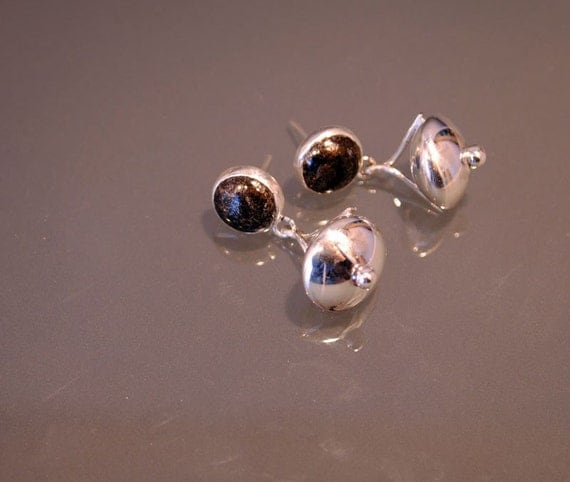
Thursday, December 22, 2011
Rock Review: Olivine

Monday, December 19, 2011
Trend Watch: Holiday Sparkle
The holiday season is here, and so are the office parties, family gatherings and formal occasions that call for a little something special to make the celebrations more memorable. When it comes to holiday style, glitter and sparkle are the staples of jewelry and accessories for women and girls of all ages. After all, we ladies do want to reflect the joyous atmosphere that surrounds us; glowing candles, shiny ornaments, and shimmering snowflakes.
One 2011 trend that we love is cut gemstone briolette look. This style features vitreous (glassy) precious and semiprecious cut gems that have been wire threaded and wrapped to create a dangling or cluster look. Often the gems are cut on both sides, which is a fun change from flat back set gems. You’ll be sure to look fabulous from all angles! This design is perfect for pendants and earrings. It also lends itself well to movement which is fabulous if your holiday plans involve a dance floor, caroling, or maybe even ice skating. You can let your jewels swing and sway along with you as you glide and bounce to your favorite tunes.
There are many gemstones that are ideal to coordinate with your holiday wardrobe colors. If you’re looking for something in the green spectrum, consider Peridot or Green Topaz. Peridot has a brightness that will cheer any ensemble. Green Topaz adds a richness and play of color that will keep you captivated as different viewing angles and lighting make the stone appear equally blue and green. Garnet is a lovely choice in the red family. It’s deep crimson tones have a depth that convey the opulence and warmth of the season. If frosty weather has you thinking in blues to complete your holiday look, Aquamarine or Iolite are unexpected choices on opposite sides of the dark and light spectrum that will ensure snowflakes and icicles aren’t the only icy favorites getting noticed. For those who dream in silver and gold, just like the beloved characters in our favorite holiday tales, Citrine with Sterling Silver may be a great way to bring some whimsy to your outfit.
Whichever accessory you choose, you can’t lose if it brings that needed touch of shimmer and shine to your holiday occasions. They will add life to your memories and maybe even provide something special to pass down to future generations who will smile as they think of the many years of warm moments your heirloom jewelry has seen.
Here is a perfect example from Layne Designs.
Peridot Briolette Earrings with Layne Designs Hallmark
Thursday, December 15, 2011
Rock Review: Pyrite

Thursday, December 8, 2011
Chrysocolla
 Chrysocolla Formation
Chrysocolla Formation


